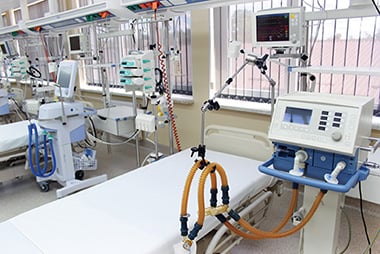 Q: How can we better engineer hospital intensive care units to improve safety for patients?
Q: How can we better engineer hospital intensive care units to improve safety for patients?
A: Mo Dehghani, director of the Johns Hopkins Systems Institute:
From ventilators to defibrillators to infusion pumps, there is a startlingly wide arsenal of ultramodern medical devices in modern intensive care units, each designed either to provide lifesaving treatment or to monitor patients’ status.
But, according to ICU clinicians, there is a downside to all this technology: Not one of the 50 to 100 complex instruments in the average ICU can “talk to” or communicate with each other. Heart monitors screen heart rates, and blood pressure monitors keep track of systolic and diastolic readings, and never the twain shall meet, as the saying goes.
The idea is to make it easier for doctors, nurses, and caretakers to interpret the data coming in, so they can make better decisions about patient care.
At least in part because of this lack of integration, one in five patients treated annually in an ICU is harmed in some way. About 4 million people a year are treated in intensive care units, so that’s about 800,000 people who suffer hospital- based infections, ICU-induced delirium, pneumonia, misdiagnoses, or other complications.
The bottom line is that even though the modern ICU appears to be a marvel of space age engineering, it is what we call “underengineered.” In other words, the component parts of the ICU are not designed to work efficiently and intelligently together.
We at the Systems Institute seed-funded and conducted two years of systems integration work that has resulted in Johns Hopkins University’s receiving an $8.9 million grant from the Gordon and Betty Moore Foundation to change that. Using a systems engineering approach, we are bringing together engineers from the Applied Physics Laboratory and the Whiting School of Engineering with clinicians from the School of Medicine to create an ICU that is not only safer for patients but also less stressful for clinicians, patients, and their families.
Think of it this way: When a pilot flies an airplane, all the instruments she needs are consolidated into one panel that tells her, at a glance, what is happening with the aircraft’s many vital systems. We believe it should be—and can be—the same way in an ICU: Instruments and machines should be able to share data and functionality in a way that is easy for clinicians to decipher, so they can provide the best patient care possible.
So we are engineering a new ICU system in which every piece of equipment can communicate and work with the others through a universal portal similar to the aforementioned pilot’s dashboard. The idea is to make it easier for doctors, nurses, and caretakers to interpret the data coming in, so they can make better decisions about patient care. What’s more, we hope to make this universal console “context intelligent,” which basically means that if the doctor, for example, adjusts the setting on the respirator, the computer will remind him or her to also adjust the infusion pump, and so on.
The grant will underwrite the cost of implementing a prototype based on these ideas in the surgical intensive care units at the Johns Hopkins Hospital and Johns Hopkins Bayview Medical Center, as well as at the University of California, San Francisco Medical Center.




